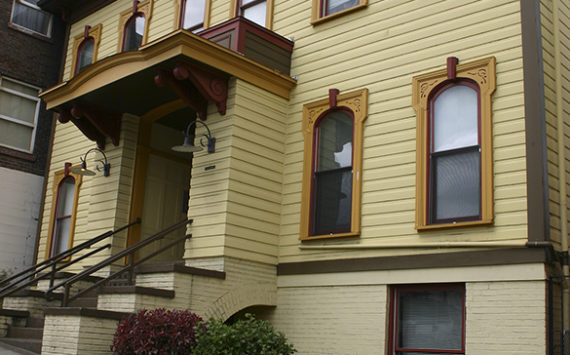If good fences make good neighbours, then the world is experiencing an unprecedented outbreak of neighbourliness. They used to wall cities.
Now they wall whole countries.
India is well on the way to being walled (except along the Himalayas, where the mountains do the job for free). The barrier along its 3,000-kilometre (1,800-mile) border with Pakistan is largely complete except in the parts of Kashmir where the steep and broken terrain precludes the construction of the usual two-row, three-metre-high (ten-foot-high) fence, with concertina wire and mines between the two fences. And India is now building an even longer barrier (3,300 km. (1,950 miles) to halt illegal immigration from Bangladesh.
While Indias walls keep unwelcome intruders out, the barriers around North Korea are meant to keep North Koreans in. The original fortifications along the Demilitarised Zone between North and South Korea, which have been continually improved since the 1950s, were built mainly to stop infiltration by North Korean troops or saboteurs. However, the fence Beijing is now building along its own frontier with North Korea is a precautionary measure to stop an immense wave of refugees from entering China if the regime in Pyongyang collapses.
The majority of the new walls springing up around the world are there to stop either terrorist attacks or illegal immigration, but sometimes they also serve as a unilateral way of defining a countrys desired borders. That is certainly true of the 2,700 km. (1,600 miles) of high sand or stone berms, backed by wire fences, mines, radar, troop bunkers and artillery bases, that seal off Western Sahara, annexed by Morocco in 1975, from the camps in Algeria from which many of the former inhabitants waged a guerilla war until the 1991 ceasefire.
It is equally true of the wall that Israel is building through the occupied West Bank. The country has long had heavily mined and monitored barrier fences along its external frontiers with Egypt, Jordan, Syria and Lebanon and around the Gaza Strip, but the wall in the West Bank does not follow the ceasefire line of 1967. Instead it penetrates deep into the Palestinian territories at a number of points to leave Jewish settlement blocs on the Israeli side, and it cuts off (Arab) East Jerusalem from the West Bank entirely.
Pakistan is building a 1,500-mile fence with Afghanistan, Uzbekistan has built a fence along its border with Tadzjikistan, the United Arab Emirates is erecting a barrier along its frontier with Oman, and Kuwait is upgrading its existing 215-km (125-mile) wall along the Iraqi frontier. But the most impressive barriers are certainly around Saudi Arabia.
The Saudi kingdom has been quietly pursuing an $8.5 billion project to fence off the full length of its porous border with Yemen for some years, but the highest priority now is to get a high-tech barrier built along the 900-km (550-mile) border with Iraq.
If and when Iraq fragments, theres going to be a lot of people heading south, said Nawaf Obaid, head of the Saudi National Security Assessment Project, and that is when we have to be prepared.
The new wall will include buried movement sensors, ultraviolet night-vision cameras, face-recognition software and quite probably automated weapons in addition to the usual electrified fences, concertina wire, dry moats and mines.
By comparison, the apparently endless debate about building a relatively low-tech fence along the 3,360-km (1,920-mile) U.S. border with Mexico to cut illegal immigration seems like an echo from an innocent past.
The European Unions feeble gestures towards curbing illegal immigration from Africa (fences around the Spanish enclaves of Ceuta and Melilla on the Moroccan coast, naval patrols off the Canary Islands) seem merely pathetic.
But these are probably the last of the good old days, at least in Europe.
The reason that the United States is incapable of controlling its Mexican border is political, not financial or technological: powerful domestic lobbies work to ensure a steady supply of undocumented Mexican workers who will accept very low wages because they are in the United States illegally. President Bush has now been authorised by Congress to build a fence along about 1,125 km (700 miles) of the Mexican border, but he will stall as long as he can while experimenting with a so-called virtual fence.
No equivalent lobby operates in the European Union, and it is only a matter of time before really serious barriers appear on the EUs land frontiers, especially with Russia, Belarus, Ukraine and Turkey.
The walls are going up all over the world, and most of them will not come down for a long time, if ever.
Gwynne Dyer is a London-based independent journalist whose articles are published in 45 countries.
Walls are going up worldwide








